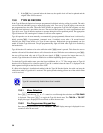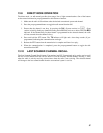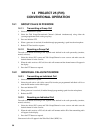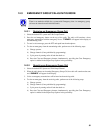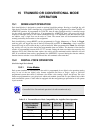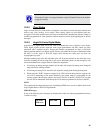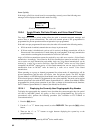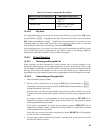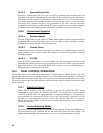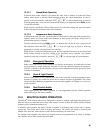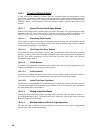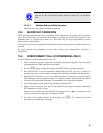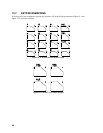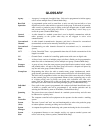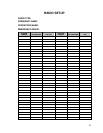
64
15.2.5.3 Scanned Group Calls
Receiving a scanned group call is the same as receiving a selected group call. During the scan
hang time, if the radio was programmed for auto-select, it will transmit back in the same mode it
received the call. For example, if a clear group is entered in the scan list, it will only receive clear
calls. If the same group was available in private and entered in the scan list, it can receive clear
and private calls, provided auto-select was programmed in the radio. The user can select
transmitting on the scanned or selected group. If a group is entered in the scan list more than once
in different modes (clear, digital, private), only the first occurrence of the group will be used.
15.2.6 Conventional Operation
15.2.6.1 Outside Address
The same outside address (works similar to Channel Guard operation) must be programmed in the
transmitting and receiving radios when Aegis or ProVoice digital or private operation is enabled.
If address is not correct, the radios will not communicate.
15.2.6.2 Channel Guard
Channel Guard encode is transmitted on analog clear channels only. Channel Guard decode will
operate on either a clear or private channel. The exception is when G-STAR signaling is used (see
G-STAR paragraph).
15.2.6.3 G-STAR
When G-STAR is programmed on a private channel, the radio will transmit G-STAR in clear
mode and then switch to private for the voice portion of the call. If G-STAR is sent with Channel
Guard, then both are sent in clear mode and the radio switches to private mode. Emergency G-
STAR data burst is transmitted in clear mode.
15.3 DUAL CONTROL OPERATION
The M7100
IP
Series mobile radio can be programmed to operate from two separate Control Units. This
permits radio operation from two separate locations in the vehicle. Dual control operation is available in
both trunked and conventional modes. Only one control unit can control the mobile radio unit at a time.
The control unit that controls the radio operation is called the active controller and the second unit is called
the idle controller.
15.3.1 Switching Control
Control can be switched to the idle controller by pressing the push-to-talk (PTT) on the
microphone associated with the idle controller. Once PTT is pressed, the radio will switch control
to the idle controller unless the active controller is currently transmitting (i.e., PTT pressed on
active controller), in which case the switch will not occur. When control is switched to the idle
controller, two short high-pitched tones will sound at the controller where PTT was pressed to
indicate that the idle controller is now the active controller and the previous active controller is
now the idle controller.
15.3.2 Control Switching Modes
The radio can be pre-programmed for two modes of dual operation, Slaved and Independent. In
the Slaved mode, the two controllers will use the same radio System and Group settings. The
Independent mode permits each controller to have its own saved System and Group settings.



